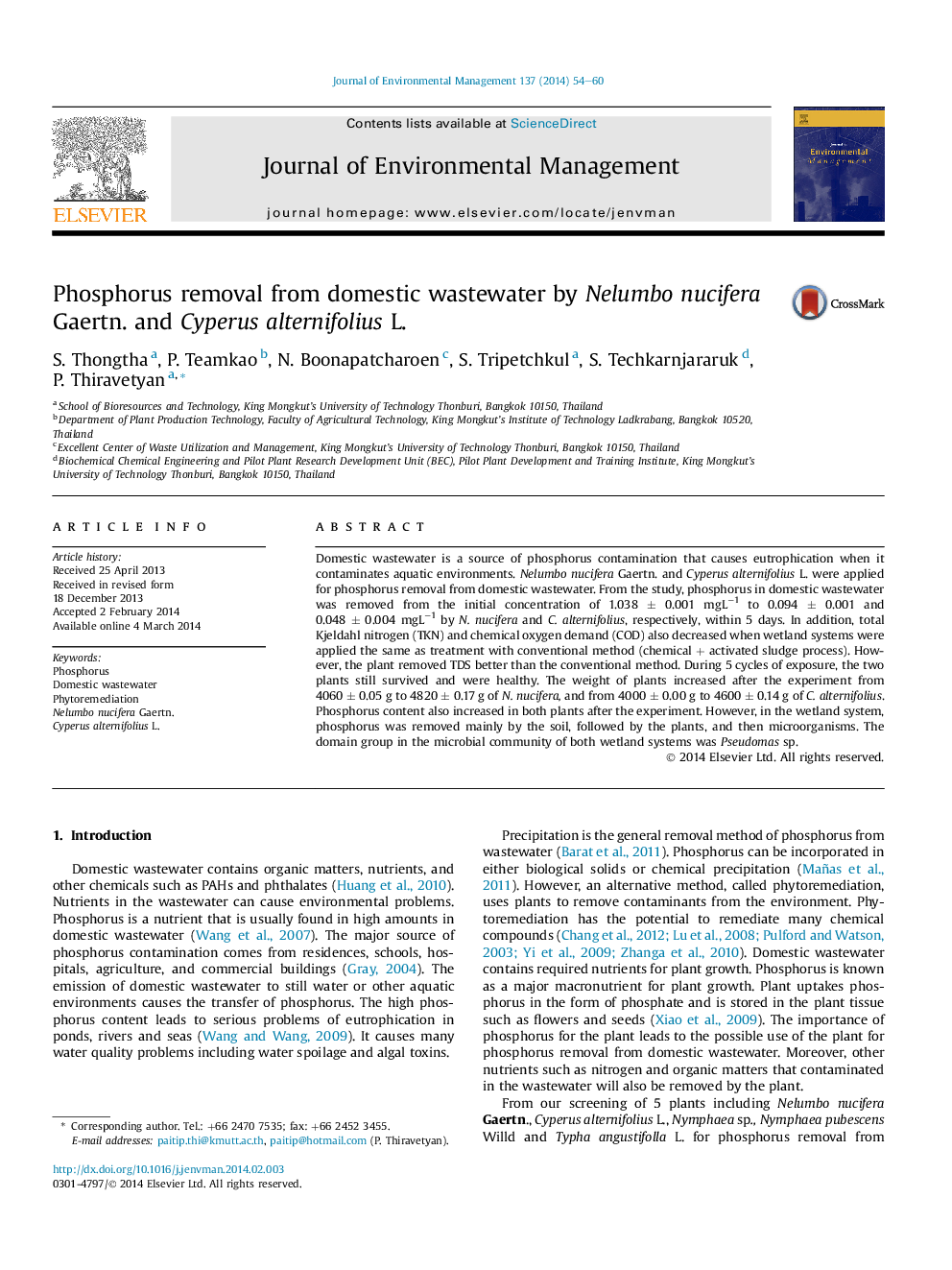| Article ID | Journal | Published Year | Pages | File Type |
|---|---|---|---|---|
| 1055726 | Journal of Environmental Management | 2014 | 7 Pages |
•Domestic wastewater treatment by Nelumbo nucifera and Cyperus alternifolius is possible.•These plants can remove phosphorus to lower than the standard guidelines within 5 days.•Plants, microorganisms and soil were involved in phosphorus removal.•Pseudomonas sp. was the domain group of microbial communities in domestic wastewater.•TDS removal in domestic wastewater by plants was higher than by conventional method.
Domestic wastewater is a source of phosphorus contamination that causes eutrophication when it contaminates aquatic environments. Nelumbo nucifera Gaertn. and Cyperus alternifolius L. were applied for phosphorus removal from domestic wastewater. From the study, phosphorus in domestic wastewater was removed from the initial concentration of 1.038 ± 0.001 mgL−1 to 0.094 ± 0.001 and 0.048 ± 0.004 mgL−1 by N. nucifera and C. alternifolius, respectively, within 5 days. In addition, total Kjeldahl nitrogen (TKN) and chemical oxygen demand (COD) also decreased when wetland systems were applied the same as treatment with conventional method (chemical + activated sludge process). However, the plant removed TDS better than the conventional method. During 5 cycles of exposure, the two plants still survived and were healthy. The weight of plants increased after the experiment from 4060 ± 0.05 g to 4820 ± 0.17 g of N. nucifera, and from 4000 ± 0.00 g to 4600 ± 0.14 g of C. alternifolius. Phosphorus content also increased in both plants after the experiment. However, in the wetland system, phosphorus was removed mainly by the soil, followed by the plants, and then microorganisms. The domain group in the microbial community of both wetland systems was Pseudomas sp.
